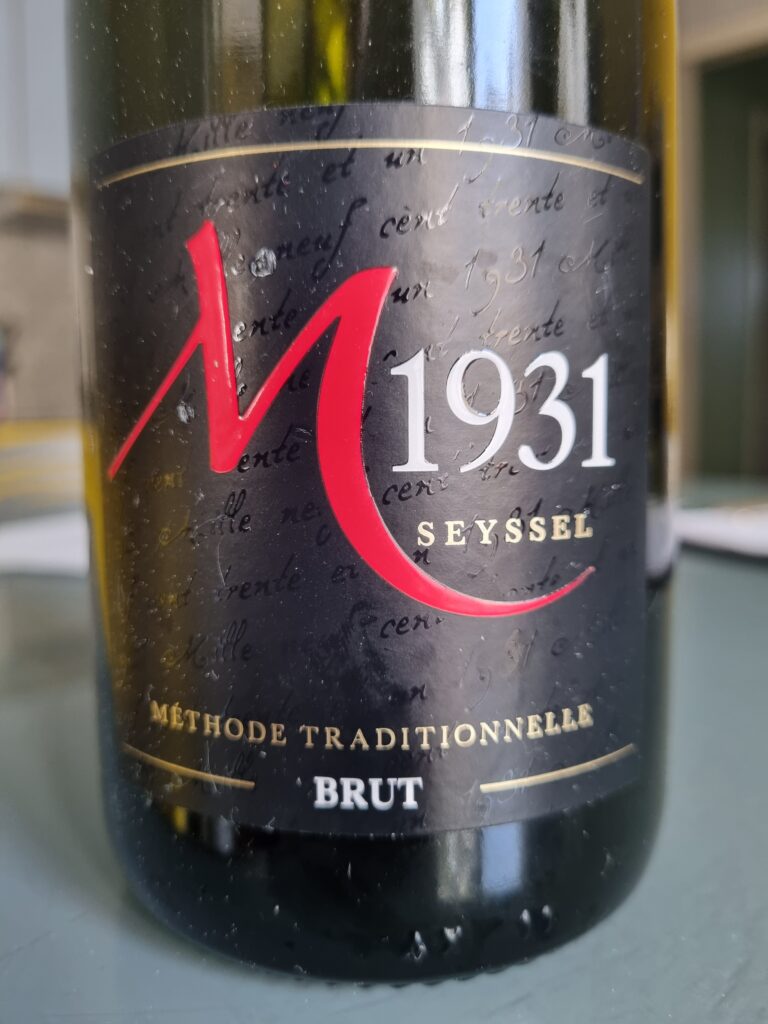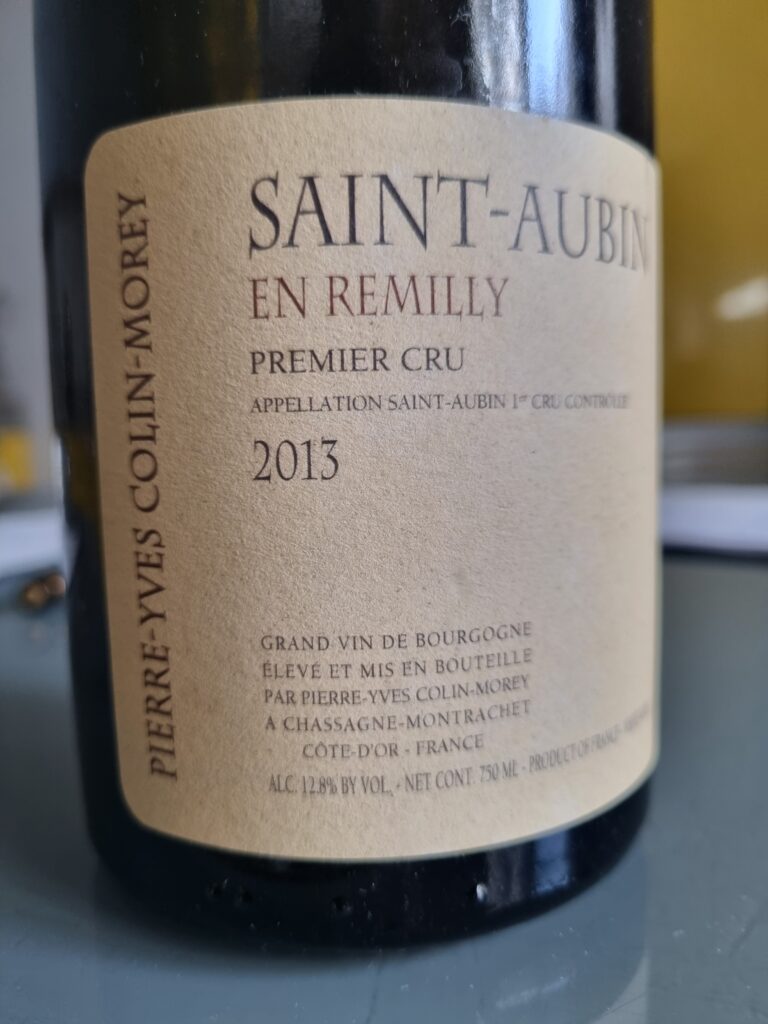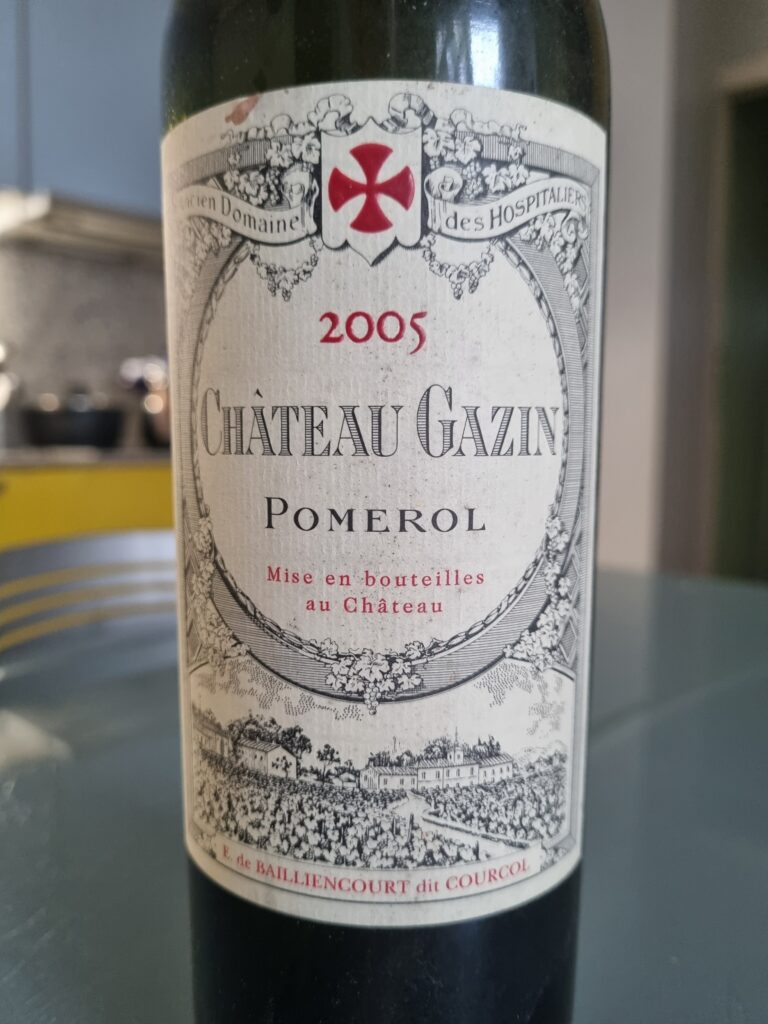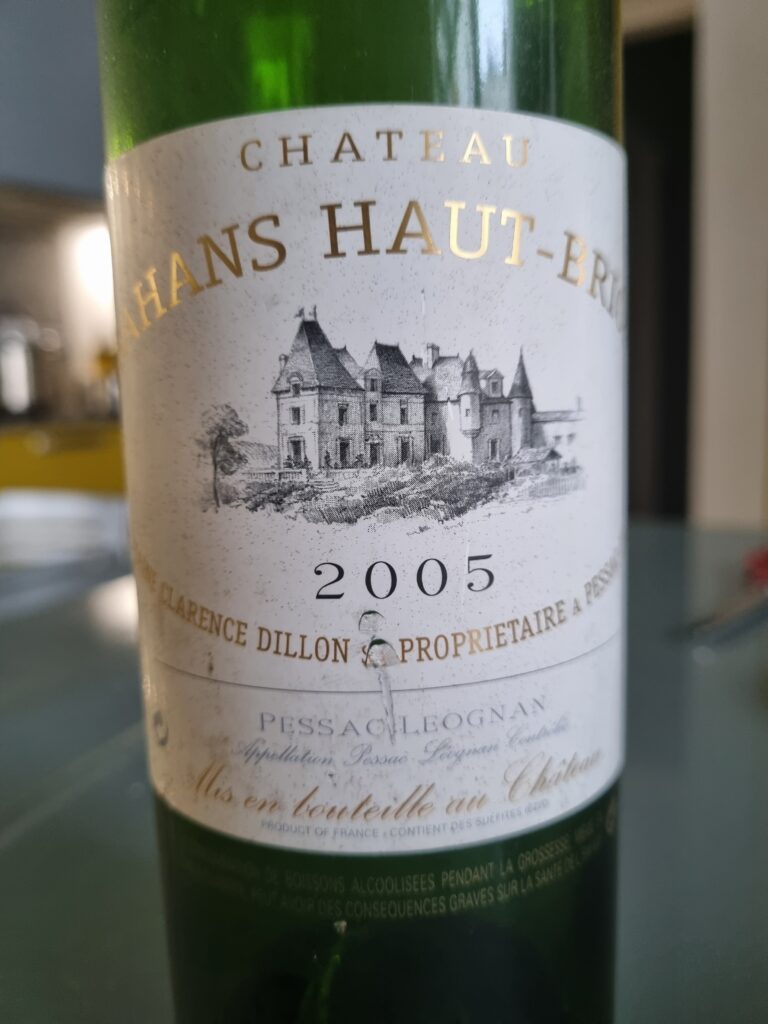What was the best Bordeaux vintage so far this century? Putting aside the oversimplification inherent in such a question, most wine lovers would probably scratch their head and end up picking from 2000, 2005, 2010, 2016, or 2019.
2005 certainly has a good reputation by anyone’s reckoning, and so I decided to take a look at a couple of fine wines from that vintage this past weekend, mostly to see if they were open for business. Nineteen years is, after all, quite a respectable age.

Friends were visiting from England over the weekend and as an aperitif at Saturday dinner I served a wine they were unlikely to find in the UK, a sparkling Savoie from the Maison Mollex – their 1931 Seyssel Brut (1931 is the year their firm was founded). Mollex is a producer (and négociant) whose wines I have followed for quite some time. At 9 euros a bottle, this dry fruity fizz is a definite steal.
On one memorable occasion I served it after a Ruinart Blanc de Blancs and everyone agreed that the Seyssel was more enjoyable!

Since asparagus is currently in season, my better half prepared a dish of large white spears with hollandaise sauce. According to an old wives’ tale, asparagus does not go with wine, the flavor being too strong and herbaceous – an opinion to which I do not at all subscribe!
Anyway, we had a white Burgundy donated by our guests with this, a 2013 Saint Aubin Premier Cru En Remilly from Pierre-Yves Colin-Morey. This grower is much loved and it’s not hard to see why. The wine had a seductive hazelnut and varietal bouquet along with inimitable match stick nuances indicative of controlled reduction. The wine was not a heavyweight on the palate, but was nevertheless very good.
The main course consisted of paupiettes de veau in a cep sauce. What in the world are paupiettes? Well, you take a slice of veal, stuff it with spiced sausage meat, and tie it up into a small bundle with string (which you cut off before serving).
On to the red wines.

The first, also an offering from our guests, was a 2004 Chambertin Clos de Bèze from Drouhin-Larose, a domaine in Gevrey Chambertin that I have visited on several occasions. I wish I could be more positive about this wine from such an illustrious vineyard. There was certainly nothing wrong with it, but it was tired, rather inexpressive, and lacking in depth for a grand cru. I think the vintage factor counted enormously here and also that the wine would have been much better in its youth.

The first Bordeaux was a 2005 Château Gazin from Pomerol. This estate is considered by many to be one of the appellation’s dependable, if rarely exciting stalwarts, a member of the B team. While I’ve never had a great Gazin, I came to this 2005 with an open mind. Well, the upshot is that I would unhesitatingly promote this to a B+! The color was remarkably deep and concentrated, most satisfying. The nose was textbook Pomerol with gorgeous truffle and almond nuances. Beautiful. The palate was not a let-down either. It was not only rich, but earthy and ferrous, with a velvety texture. A truly delicious wine entering its drinking window i.e. not too young.

Next up, with the cheese platter, was 2005 Bahans Haut Brion. Although a second wine, I expected this to be a step up from the Gazin, yet it was not. The color was as it should be for its age and the nose showed classic cedar, tobacco, and graphite notes. So far, so good. However, the wine seemed somewhat disjointed on the palate and had a strangely alcoholic finish (speaking here of the impression of alcohol rather than in a laboratory analysis sense). I did not really find the imprint of this great terroir which even a second wine should have. Could this 2005 simply have been two young? Was I wrong to go on the assumption that a second wine would necessarily come around much sooner than the grand vin? It so happens that I have one more bottle of this wine, which I will be sure to hold back for several more years. It could very well be that wine will round out the rough edges and bring it into balance. Time will tell.
Starting with the 2007 vintage, Bahans Haut Brion changed its name to Le Clarence de Haut Brion in honor of Clarence Douglas Dillon, the first member of the Dillon family to own the château.
